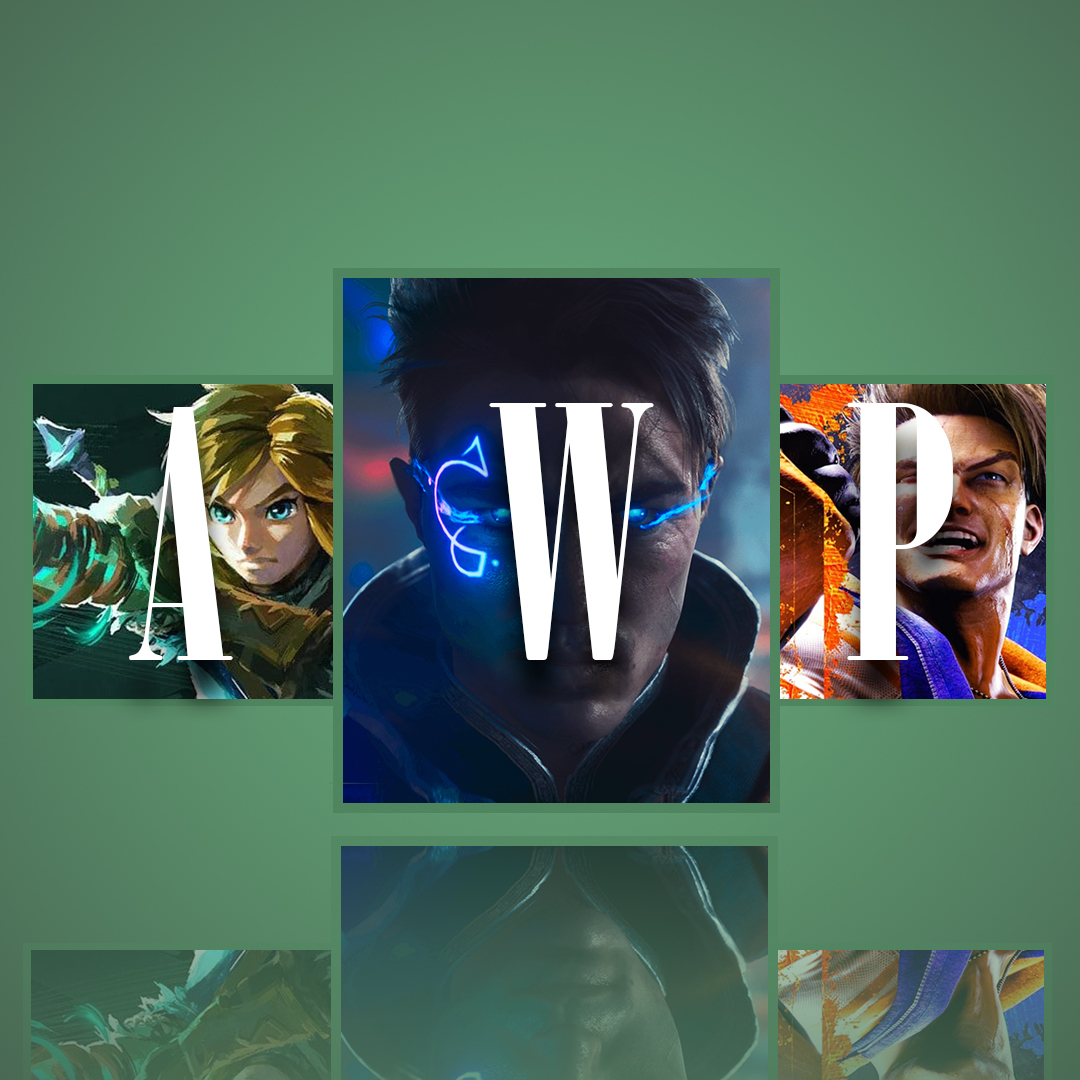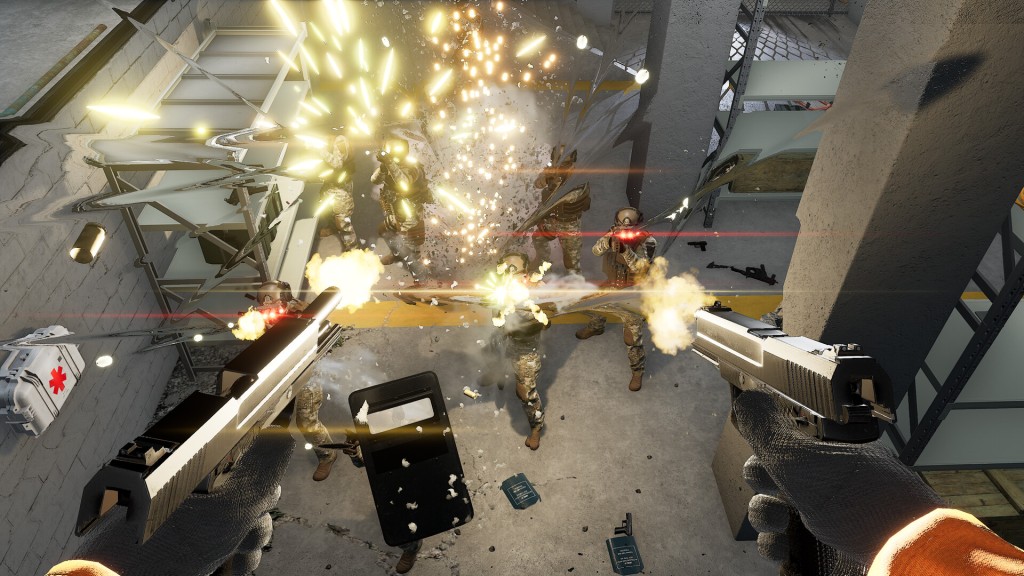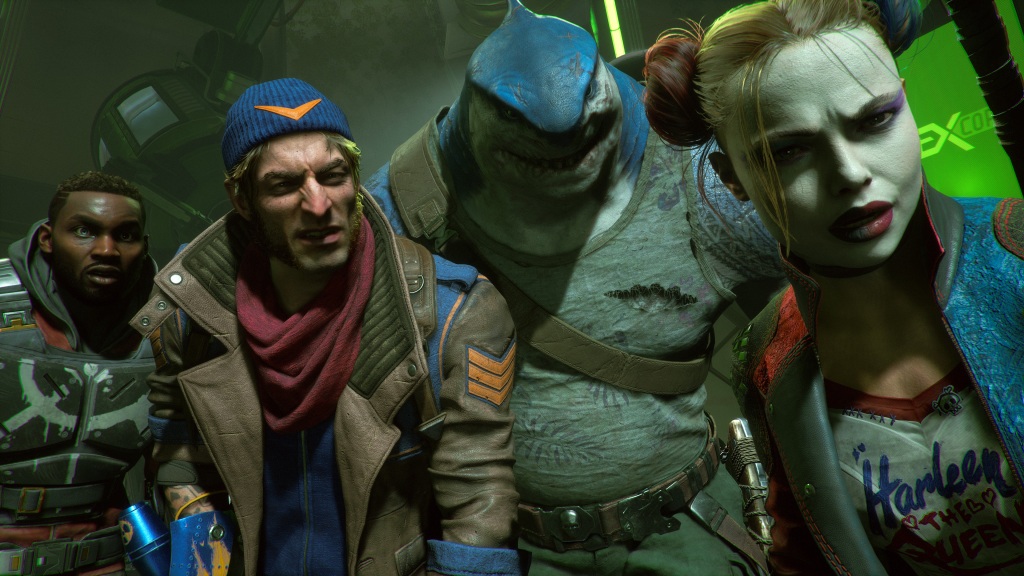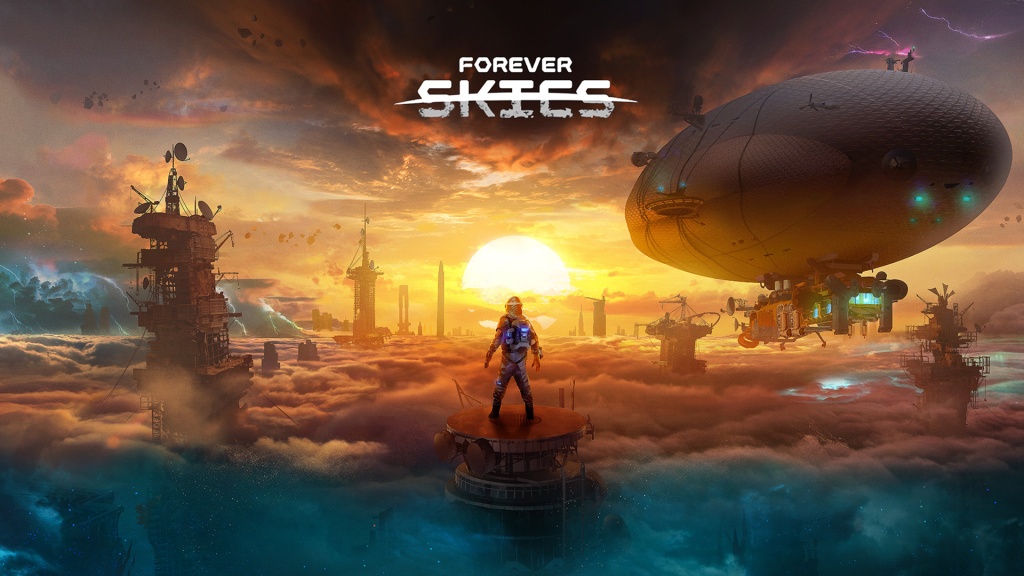The self-professed spiritual successor to FEAR: Trepang² has finally arrived, placing you in the shoes of a lethal super soldier as they fight a clandestine supernatural organisation experimenting with dangerous artefacts.
It’s no surprise that this game takes inspiration from FEAR, featuring a setting with a clandestine supernatural organization battling evil, impressive particle effects reminiscent of John-Woo films, and a core mechanic of slow-motion that helps players even the odds against a highly coordinated enemy.
In the initial levels, the game excels at delivering a nostalgic throwback to the iconic action-horror shooter. However, it becomes even more intriguing with the addition of cloak and grab modes. With a simple button press, players can temporarily become invisible or employ a human shield, which synergizes remarkably well with the game’s AI systems.
While the AI isn’t as coordinated as FEAR, it still does a good job where enemies can both flank and remember a player’s last seen position, focusing fire on that location. The cloak mechanic complements this well by allowing players to easily surprise enemies who have their attention elsewhere.

The gameplay is often more reminiscent of Serious Sam or Doom as you will be running into a lot of enemies that just charge at you and throw everything they’ve got.
However, that’s where the similarities mostly end to FEAR and the rest of the game plays rather differently. There is no Alma Wade for players to fear in this game, but the story does feature similar themes. It is easier to compare it to Control and the SCP universe, with the overarching story focusing on dangerous anomalies and how humanity fails to exploit them.
Whilst it is an interesting pivot narratively, gameplay-wise, things do get messy at times with enemies being thrown at you haphazardly. The gameplay is often more reminiscent of Serious Sam or Doom as you will be running into a lot of enemies that just charge at you and throw everything they’ve got. In fact, you even have enemies that run at you with explosives in their hands (sound familiar?).
Whilst these enemy types were interesting, they felt antithetical to the mechanics and AI making up this game, taking away the strategical element and depth. Furthermore, with enemies throwing grenades at you every few seconds, it dissuades players from being patient and assessing their surroundings in order to draw a battle plan. Aside from a few setups, after the first few levels there was no incentive or capacity to outsmart and flank the enemy, instead becoming a match of attrition on higher difficulties.
The slow-motion elements that are there, including a melee system which is also reminiscent of FEAR do have some shortcomings. They work well for the most part but don’t mesh well with certain elements. For example, when a suicidal grenade enemy charges at you, the expectation is that kicking them should throw them back at your enemies making them blow up. However, the kick doesn’t always effectively launch enemies, and interestingly enough, the dropkick often sends you flying backwards more than it does the enemy.

the harder difficulties feel very shallow, with the developers just throwing everything at you to give the illusion of challenge.
The slow-motion feature on the other hand has such a high cost to it, that you barely get to use it when needed the most. Whilst it is similar to the reflex system from FEAR, the way you acquire it is at odds with its supersoldier fantasy. You only build up the meter by killing enemies, but as you will die a lot on the harder difficulties, even doing that is a chore. It should be something that lets you take control of chaotic situations and even the odds, but unfortunately, because it is used as a reward for killing enemies it is a weird chicken-and-egg situation.
Sliding is another key mechanic and something that you will have to do a lot to keep up with the rushing difficulty of the game. What is odd is that it is tied to its own button rather than happening during sprint and crouching like most games. This causes some infighting between certain action inputs, where if the sprint button is held down, pressing the slide button will get ignored, so to reliably slide, you have to let go of sprint and then press slide.
It completely breaks the flow of the action, resulting in cheap deaths on higher difficulties. Not to mention, it isn’t utilised well enough in levels and it would have helped if there were more items like desks or other openings that you could slide under during combat to get a drop on your enemies.
Speaking of the difficulty, there are around 6 different difficulty settings in this game, ranging from Easy to Rage Mode. We played the game mostly on hard, with the occasional side missions completed on very hard to unlock certain guns or throwables. Sadly, the harder difficulties feel very shallow, with the developers just throwing everything at you to give the illusion of challenge.

The game truly excels when it hones in on its main mechanics and the influence of FEAR.
It is really disappointing, as we were hoping better difficulty would mean enemies would be smarter and catch us off guard more, but instead, it just made them less prone to damage and increased their lethality against us without changing their AI behaviour. Winning after dying a lot doesn’t feel like an accomplishment here, but as if you got very lucky instead.
Despite all that, the game still manages to shine at certain points, with a standout feature being the side-missions, some of which are even better than the main content. There are two highlights in particular, “Oil Rig” and “Unidentified Structure” that are the developers at their best, offering some of the most nerve-wracking moments you will experience. Even the wave-based and holdout side-missions don’t feel tired, with the unique setting and narrative delivery making them stand out.
The game truly excels when it hones in on its main mechanics and the influence of FEAR. There is a particular standout mission called “site 83” that is bound to excite fans of the iconic action-horror game. It is a late mission but it features everything that made FEAR unique from the way the jumpscares happen to the enemy encounters.

By putting an incendiary mod on your shotgun, you can turn it into a long-range fire-damage dealing weapon
The gunplay is solid, and each gun feels impactful and fun to use. What makes them even better is the addition of customisation, allowing you to add certain scopes or barrel modifications like suppressors, lasers, etc… Some of these really help change the playstyle of the guns. The bolt gun is a good example of this, as based on the attachment it turns from an explosive grenade launcher to a harpoon gun that nails enemies to the wall.
Our favourite one to use was easily the dragon’s breath shotgun. By putting an incendiary mod on your shotgun, you can turn it into a long-range fire-damage dealing weapon that quickly burns and launches enemies. What really makes it feel impactful is how the AI reacts to being set on fire, flailing on the ground and misfiring their guns. These get even better once you start dual-wielding, making you a lethal bulldozer.
Though there is a case to be made if they are too good, and prevent players from wanting to equip anything else. They work well against pretty much everything so there isn’t much incentive to swap away from them. It didn’t feel like much of an issue though thankfully, as unlike something like the recent DOOM games, you only have two weapons equipped so you can’t really use them as solutions to certain combat puzzles.
The voice acting is a highlight in this game, and the actors have done a fantastic job in really selling the high-stake situations you will encounter regardless of how cheesy it gets. The sound mixing for the most part is really good asides from a few technical hiccups in certain missions.

It feels like it’s stretching itself in different directions and doesn’t know exactly what game it wants to be.
The story isn’t anything to write home about and is lacking finesse to deliver its obvious twists, but it manages to frame the combat scenarios well enough. We don’t want to spoil anything but due to the boss and metal nature of the excellent last mission, you will see why we compared it to DOOM 3.
Trepang is one of the trickiest games to review, where despite having a fun time with the game, the shortcomings are too big to ignore. It feels like it’s stretching itself in different directions and doesn’t know exactly what game it wants to be. It is at its best when it captures the influence of FEAR, resulting in some of the most memorable missions we have played.
To sum it up, while Trepang grapples with its own identity and doesn’t fully capture the essence of FEAR, its enjoyable gunplay and collection of memorable missions make it a worthwhile experience for fans of fast-paced action shooters.





Leave a comment